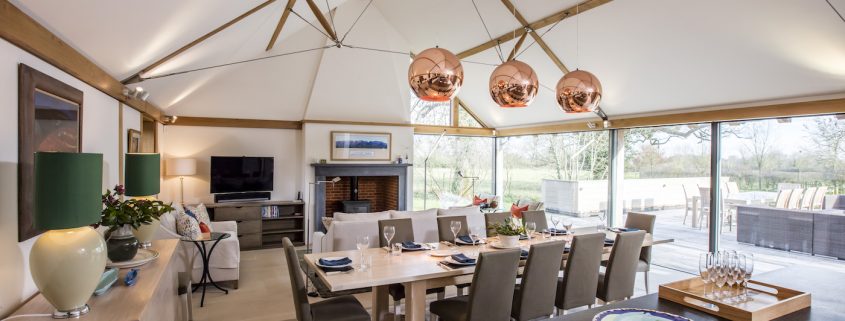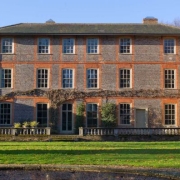15 home projects you don’t need planning permission for
Want to refurbish or renovate an existing building? You’ll be happy to find out just how many things you are able to do without having to go through the tedious planning permission process.
Permitted Development (PD) rights allow you to do a lot of different home improvements, from converting a barn to adding solar panels, or building a basement.
Blanket consent have been granted by the government for a range of works, as long as they meet a certain criteria and the local authority accepts your plans. But this is a complex area of planning regulations, and can involve numerous classes of development – each with their own particular rules.
1. Remodelling interiors
A fast and easy way to update a space is by renovating rooms – you won’t need any planning permission for internal changes, such as moving or knocking walls down, adjusting floor heights, creating a new bathroom or shuffling a kitchen around.
However, this applied to only an occupied and a completed house and not to a conversion under construction or a new-build. If your home is also listed in any way then you are likely to need listed building consent.
2. Single-storey extensions
You can build storey-height extensions to the sides and back of your house, under PD rights. The general limits for side extensions are that you can extend up to half the width of the original building. Rear expansions can be extended 4m out from the original dwelling on detached houses, and 3m in other cases.
To qualify for a PD in terms of ridge height, you are restricted to 4m as well as the amount of garden amenity you can cover – this is 50% maximum. The materials also have to match the existing building as much as possible.
3. Multi-storey extensions
You can also get permitted development for two-storey extensions at the rear of your house, as long as they are located under 7m from the rear boundary and do not extend by more than 3m. If the side of the extension is within 2m of the flank boundary, then the eaves can’t be more than 3m high.
4. Re-roofing
Roofing work, such as replacing materials or repairing sections do not require formal consent, as long as they are no more than 150mm from the existing plane – this is just enough to add a layer of external insulation for an attic conversion.
Further on from this, fitting roof windows can offer a nice opportunity in top-down natural lighting. If they don’t stand out more than 150mm form the plane of the roof, they are permitted development.
5. Loft conversion
One cost-effective way of getting more indoor space is renovating an attic into a living space. As this mainly rests on internal work, there’s usually no need for planning permission – provided that the works don’t extend further than the plane of the existing slope on the front elevation. Available space can be expanded either by changing a hipped roof to a gable or with dormer windows. However some authorities do have restrictions on loft conversions, so also check first before proceeding with this type of work.
6. Digging a basement
Adding a living area underground falls into the extension category, but councils are removing permitted development rights in some urban areas. Currently, the status of this is under review, and a permitted development class to cover them is yet to happen.
7. Adding a porch
You can add a little porch up to 3m high and 3m2 in floor area (measured externally), as long as it is at least 2m away from any boundary with a highway.
8. Garage conversion
As long as the conversion doesn’t include enlarging the building in any way (including the addition of dormers in the roof) and it is exclusively internal, planning permission isn’t required when renovating a garage – for residential purposes. Just check with your local council that the right to convert hasn’t been removed – a common issue with new conservation areas and new developments.
9. Outbuildings
Sheds, garages, summer houses and more single-storey structures are permitted to be built under PT, provided their use is incidental to that on the main building (e.g. for a playroom rather than an extra bedroom). The building must be at the back of the principle elevation of the house, and it can’t cover more than half of the garden.
10. Adding or replacing windows
Providing the appearance of the house isn’t altered materially, you don’t need consent for this type of project. Special rules are in place with side windows to protect neighbours’ privacy policy, which should be fitted with obscured glazing.
Always check the conditions of previous planning consents, because some stop alterations to windows in houses and conversions. Again, alterations to a building in a Conservation Area or a Listed Building may need consent.
11. Driveways and patios
Laying or replacing hardstanding is considered permitted development, across most parts of a property’s grounds. But if you’re planning to change more than 5m2 of your front garden, you have to either use a porous surface such as gravel, or permeable block paving. You should also direct the rainwater to grass or a flower bed where it can then naturally drain.
12. Gates and fencing
You can build new boundary treatments, as long as they fall within allocated height restrictions. If they are fronting a main road they can’t be any higher than 1m, while a 2m threshold applies elsewhere. However, this right does not extend to listed buildings.
13. Adding solar panels
Homeowners are now able to add solar thermal or photovoltaic (PV) panels on roofs or walls, due to the government’s aim to cut down carbon emissions. Just ensure they don’t jut out more than 200mm beyond the roof plane, and they are fitted below the highest part of the covering. Panels can also be installed on outbuildings or in gardens, with size restrictions.
With all of these regulations it is always best to check the particular status of your building and we are more than happy to advise and assist.




 Bentinck House
Bentinck House

